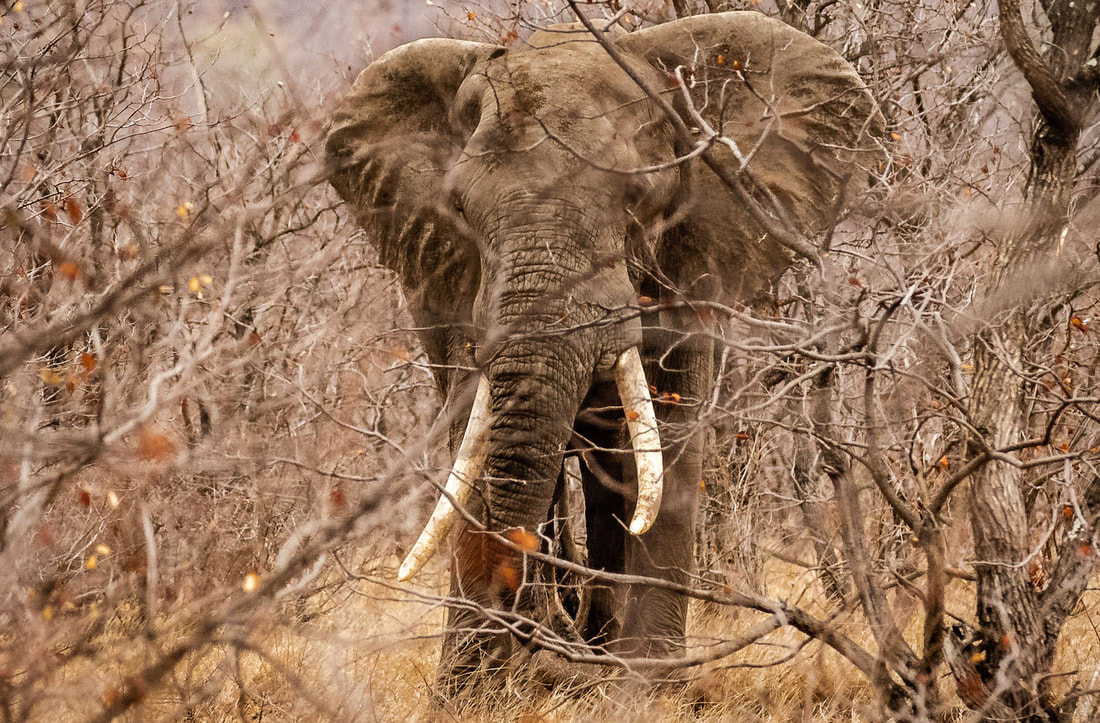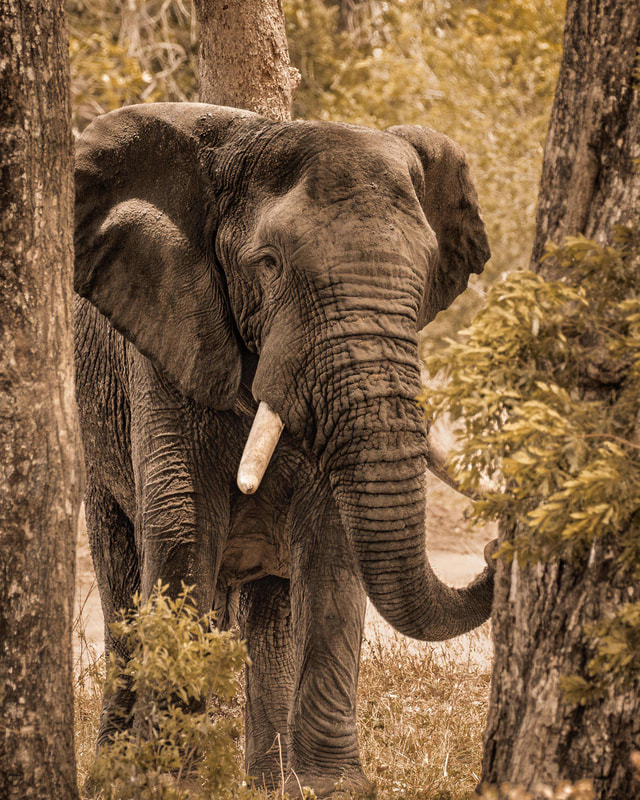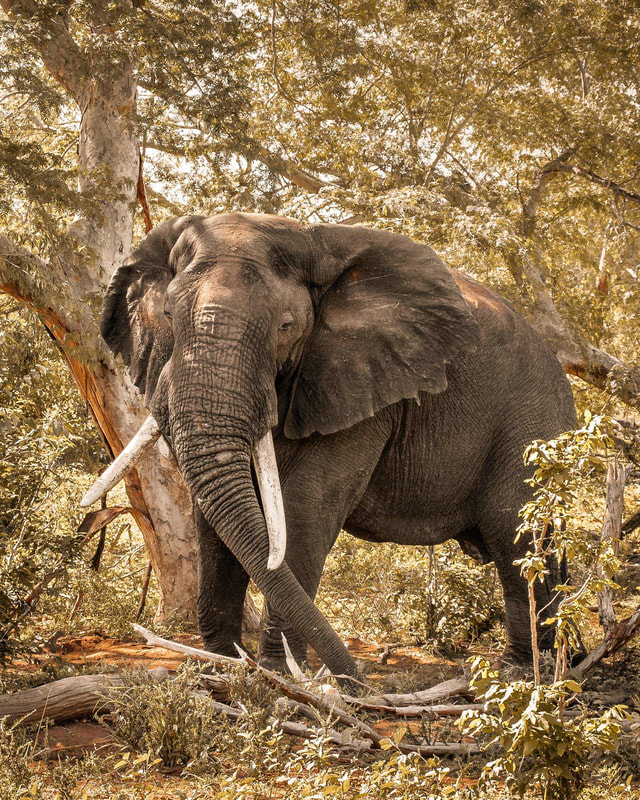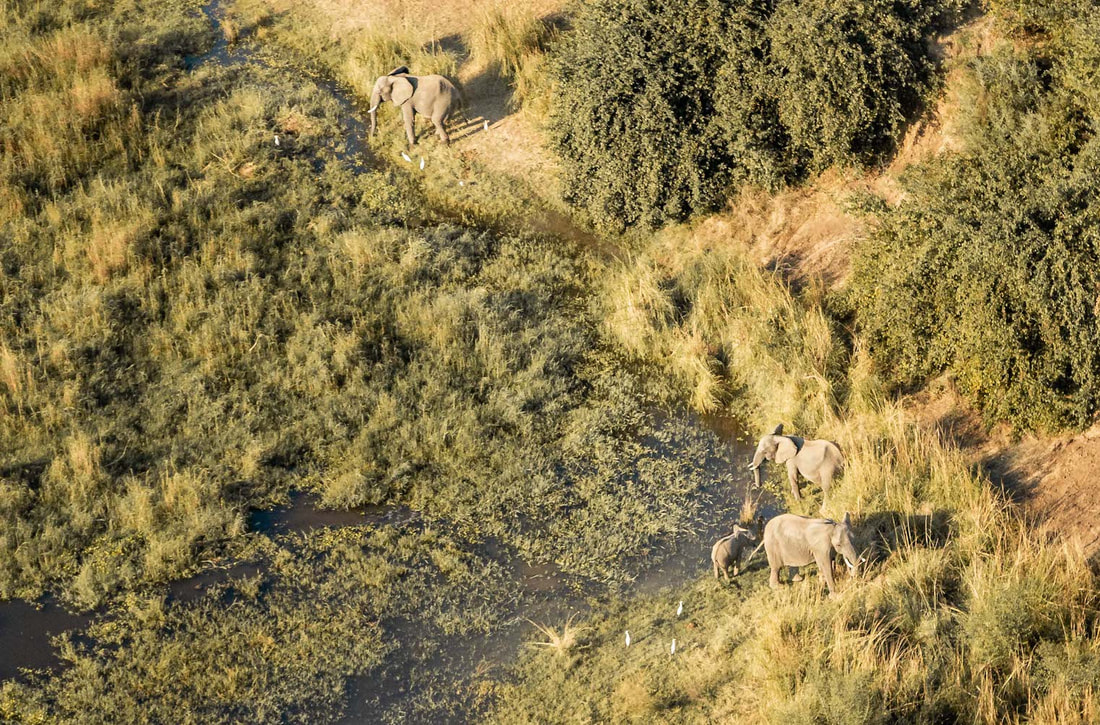What is the largest land animal ever?The elephant species are the world’s largest herbivores. Separated into two groups, African and Asian elephants are largely similar however, there are minor differences. The African elephants’ ears are large and shaped almost like the African continent, which act as a cooling mechanism in the heat of Africa. The Asian elephants’ ears are much smaller and rounder, this is appropriate because they live in jungles and do not need to cool off from the sun. My trunk is the most sensitive organ in my body, containing around 150 000 muscle units. While it is strong enough to tear a branch off a tree, I can also use it to pick up a single blade of grass due to its sensitivity. We use our trunks to drink, communicate, to defend ourselves, as a snorkel when swimming, to eat (which we do for up to 16 hours per day) and more. It is my most instrumental feature. My thick and wrinkly skin is not due to old age, but it helps me cool down in the heat. To protect myself from the sun I also take sand or mud-baths. I am known for my human-like intelligence and good sensing. My memory is remarkable, and I never forget things, faces, scents etc. Be sure to keep that in mind! Unlike many animals our hippocampus (which controls emotions) is highly developed. This enables us to relate to our families, other species, and humans with empathy. When we identify any elephant carcasses, we grieve or pay our respects. We can also identify a person’s age and gender based on the sound of their voice. We communicate through body language, scent, touch and through seismic signals (creating vibrations in the ground and detecting them through our bones). We spend most of our days eating and traveling in herds. We don’t get much sleep but when we do, we sleep standing upright. ‘Elephant’ comes from the Greek word ‘Elephas’ meaning ivory, which is ironically the main part of their bodies causing them to go extinct. 90% of elephants have been wiped out in the past century, leaving merely 400 000 out of 12 million. To Wild and Free, and the rest of the world, this a global crisis as elephants assist both humans and other species. Elephants fight climate change by scattering seeds and "planting" trees during their travels, they aid other species by digging up waterholes; fertilising land and pushing over trees to maintain savanna ecosystems. By protecting elephants, we are ensuring the future of the earth and saving other species. At what age does an Elephant reach its maximum size?The elephants finally attain their maximum size in their mid-years. Male elephants reach their maximum size from 25 to 40 years of age, weighing up to 12,000 pounds. In the meanwhile, female elephants reach their maximum size at the age of 15 to 30 and weigh an average of 8,000 pounds. The estimated life expectancy of the male is between 60 and 70 years, while the female is between 50 and 60 years. Does an Elephants have a good sense of smell?Elephants have a good sense of smell. Elephant trunks are four times as sensitive as the smell of a bloodhound. Elephants can also detect water from miles away, according to studies. The elephant has an improved sense of smell due to millions of receptor cells in its upper nasal cavity. Nostrils are located at the tip of the trunk and are responsible for breathing, smelling, and drawing water into the mouth.The elephants’ sense of smell is in constant use, with the trunks moving back and forth, detecting new scents and information. Once a scent is drawn in through the nostrils, there is a series of seven olfactory turbinals located in the nasal cavity. Turbinals are curls of bone that are connected to millions of cells that pick up smells. If smelling does not provide enough information, elephants may collect the substance with their trunks. Then the chemical information is passed on to its Jacobson’s organ, a chemical detection unit located in the soft tissue of the upper palate (roof of the mouth). The organ is attached to the oral/nasal cavities and primarily detects a female's estrus (reproductive) status. This behavior is known as the Flehmen response and is characterized by the elephant curling its trunk into its mouth. Comments are closed.
|
Categories
All
Archives
October 2023
|




